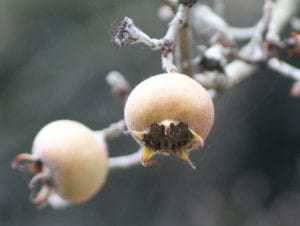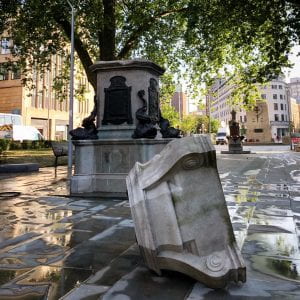By Susan Stephens
 As autumn approaches winter, the flamboyant colours of the flowers in the garden recede and the fiery colours of the leaves together with the black, white, red, purple and yellow of berries and fruits come to the fore.
As autumn approaches winter, the flamboyant colours of the flowers in the garden recede and the fiery colours of the leaves together with the black, white, red, purple and yellow of berries and fruits come to the fore.
The Medlar (Mespilus germanica) is a small tree overlooking the pool below the terrace and at this time of year is covered in small golden fruits. The appearance of the fruit has led to it being likened to a dog’s bottom or the ruder French version ‘cul de chien’! Despite its name the Medlar is endemic to Persia (Iran), South East Asia and South West Europe and not Germany. The Romans and Greeks are thought to have grown Medlars and brought them to Britain and it is believed that they have been in cultivation for longer than 3,000 years. The fruit was a delicacy in Britain in Medieval times and a winter treat before sugar was discovered, as well as an important source of Vitamin C when very few other fruits would have been available. The Medlar’s popularity declined in the Victorian era as other fruits became more popular. (more…)


